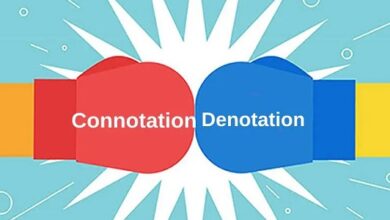Difference between synonyms and antonyms with examples
Synonyms
Synonyms are words that have a full or similar meaning to another. They are used in English to be used in texts in order not to repeat words and enrich the discourse. They establish synonymy relationships which are important in lexicographic analysis in order to prepare definitions. Synonyms not only enrich the language but they can cause a preference for one of the forms over the rest, causing them to become obsolete and disappear. There are words that despite having similar meanings do not behave syntactically the same, this leads us to the types of synonyms: In this article we will elaborate the Difference between synonyms and antonyms
Types of Synonyms
There are words that despite having similar meanings do not behave syntactically the same, this leads us to the types of synonyms:
1-Total or strict synonyms:
They are those that have the same meaning in all linguistic contexts. Partial or contextual synonyms: They have the same meaning in many contexts but not in all. They can vary depending on the context and geography.
2-Referential synonyms:
They do not mean the same but indicate common features.
3-Synonyms of connotation:
these are terms that lose their true meaning.
Antonym
They are words that have opposite meanings. They belong to the same grammatical category. There are three classes of antonyms:
1-Gradual:
The two words gradually oppose each other. For example, cold and hot, because between them there is warm and warm.
2-Complementary:
The meaning of one can eliminate that of the other. They are incompatible with each other.
3-Reciprocal:
They establish a relationship from the opposite point of view, they do not exist without each other.
Examples of Synonyms
- Nice- beautiful
- Warm -hot
- Cold- icy
- Warn- prevent
- Dance- dance
- Kiss-kiss
- Fat obese
- Student-student
- Joy-joy
- Teach-educate
- Enrage-anger
- Illuminate-illuminate
- Hear-listen
- Fugitive-Fugitive
- Physician-physician
- Little-scarce
- Steal-steal
- Gift-gift
- Valuable-precious
- Priest heals
Antonym
The antonym is the opposite of the synonym. This means that they are pairs of words that contradict each other, that are contrary, opposite to each other. For example: possible – impossible, brave – cowardly, tall – short, fat – thin, and so on.
One must be very careful when calling one word an antonym of another. The classic example is black-white. Why is white the opposite of black and vice versa? It is different for you to say that someone is tall and short, as these are the words that designate this condition.
But at no time was black said to be the opposite of white. This is completely cultural, and we are taught this relationship from an early age.
Types of Antonyms
Below you will see the various types of antonyms and some examples of each one, to delve deeper into the study of antonymy. At the end, be sure to answer the exercises to better fix the content in question!
1-Binary or complementary antonymy
This type of antonymy corresponds to pairs of words that cannot coexist in the same context. For example, if I say that a certain person is alive , he cannot necessarily be dead . That is, for one word to be used, the other must not be.
Here are some examples of this type of antonyms:
- Mobile/property;
- Urban/rural;
- Male Female.
In this case of antonyms, the negation of one results in the affirmation of the other. If a given object is not immovable, it is necessarily mobile. This logic will be important to understand the third and final type of antonymy, that of gradation.
2-inverse antonymy
The second group of antonyms concerns words that describe the same relationship between two things or people, but from different positions; in reverse order. It sounds complicated to understand, but it’s not. See the examples below:
- Dad son;
- Up down;
- Buy Sell.
Let’s take example A. Father describes the relationship between father and son . Filho , in turn, also describes this same relationship, but in reverse order. The two terms can therefore be considered inverse antonyms of each other : if X is the parent of Y, then Y is the parent of X.
The same goes for the other examples: the inverse of buying is selling; the inverse of above is below.
3-graded antonymy
Tow words are graded antonyms when each one of them occupies an opposite pole in a continuum. See an example below to understand better:
- Tall short
If we made a continuum for this example, it would initially look like this:
However, it would not be limited to just these two poles. The scale would likely be similar to the following:
In this way, the denial of one does not result in the affirmation of the other, because if I say that a certain person is not short, he is not necessarily tall: he can be very low, medium, high or very high.
Here are some more examples of gradual antonymy:
- Hot Cold;
- Adult/child;
- Black White.
Example C may, at first glance, not seem like a case of graded antonymy. However, if we stop to think that the process of a child becoming an adult involves a series of stages (pre-teen, adolescent, young-adult…), it is easy to fit him into this type of antonym.
Examples of Antonyms
- Joy-sadness
- Abundant-Scarce
- Love Hate
- Fast slow
- Opaque-Clear
- Hard-Soft
- Cold-Hot
- High Low
- Thin fat
- Bitter sweet
- Peace war
- Fun-Boring
- Wide-Narrow
- Talkative-Quiet
- Poverty wealth
- Patient-Intolerant
- Strong weak
- Dead live
- Brave coward
- Defeat-Triumph
We hope that you have understood the difference between synonyms and antonyms.


